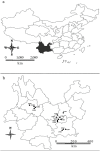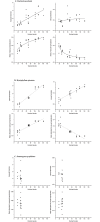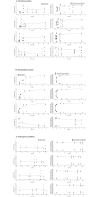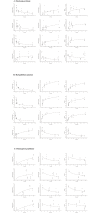Reproductive Allocation in Three Macrophyte Species from Different Lakes with Variable Eutrophic Conditions
- PMID: 27806122
- PMCID: PMC5091910
- DOI: 10.1371/journal.pone.0165234
Reproductive Allocation in Three Macrophyte Species from Different Lakes with Variable Eutrophic Conditions
Abstract
Reproductive allocation is a key process in the plant life cycle and aquatic plants exhibit great diversity in their reproductive systems. In the present study, we conduct a field investigation of three aquatic macrophytes: Stuckenia pectinata, Myriophyllum spicatum, and Potamogeton perfoliatus. Our results showed that widespread species, including S. pectinata and M. spicatum had greater plasticity in their allocation patterns in the form of increased sexual and asexual reproduction, and greater potential to set seeds and increase fitness in more eutrophic environments. P. perfoliatus also exhibited a capacity to adopt varied sexual reproductive strategies such as setting more offspring for the future, although only in clear conditions with low nutrient levels. Our results establish strategies and mechanisms of some species for tolerating and surviving in varied eutrophic lake conditions.
Conflict of interest statement
The authors have declared that no competing interests exist.
Figures





References
-
- Barrett SCH, Echert CG, Husband BC. Evolutionary processes in aquatic plant populations. Aquat Bot. 1993; 44: 105–145.
-
- Li W. Environmental opportunities and constraints in the reproduction and dispersal of aquatic plants. Aquat Bot. 2014; 118: 62–70.
-
- Scheffer M. Ecology of Shallow Lakes. London: Chapman & Hall; 1998.
-
- Jeppesen E, Sondergaard M, Christoffersen K. The Structuring Role of Submerged Macrophytes in Lakes. New York: Springer-Verlag; 1998.
-
- Les DH, Crawford DJ, Kimball RT, Moody ML, Landolt E. Biogeography of discontinuously distributed hydrophytes: a molecular appraisal of intercontinental disjunctions. Int J Plant Sci. 2003; 164: 917–932.
MeSH terms
LinkOut - more resources
Full Text Sources
Other Literature Sources

